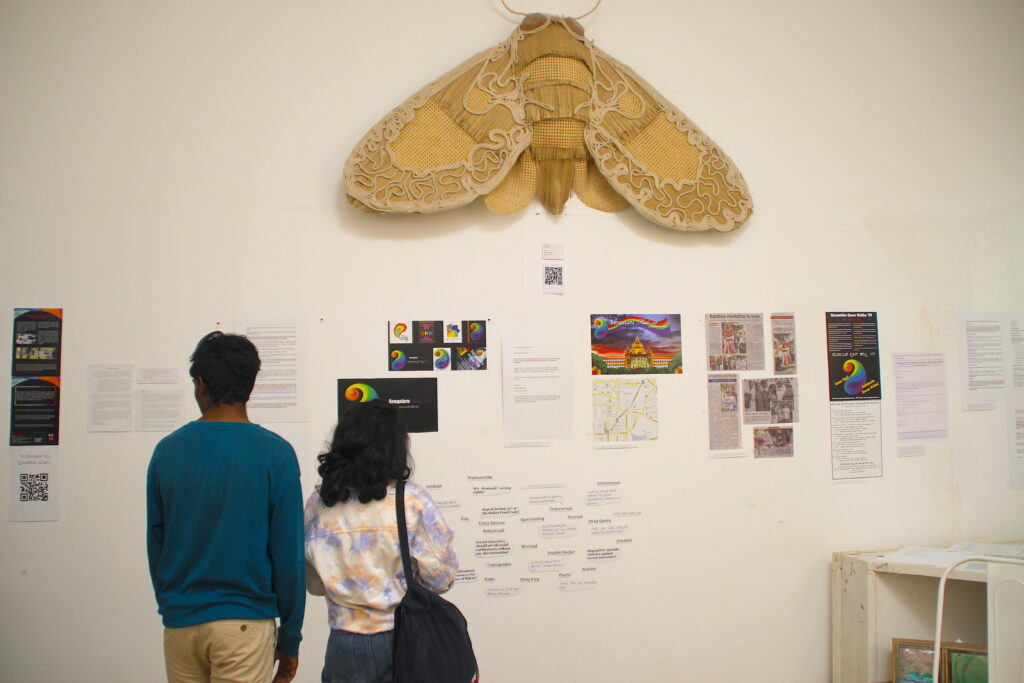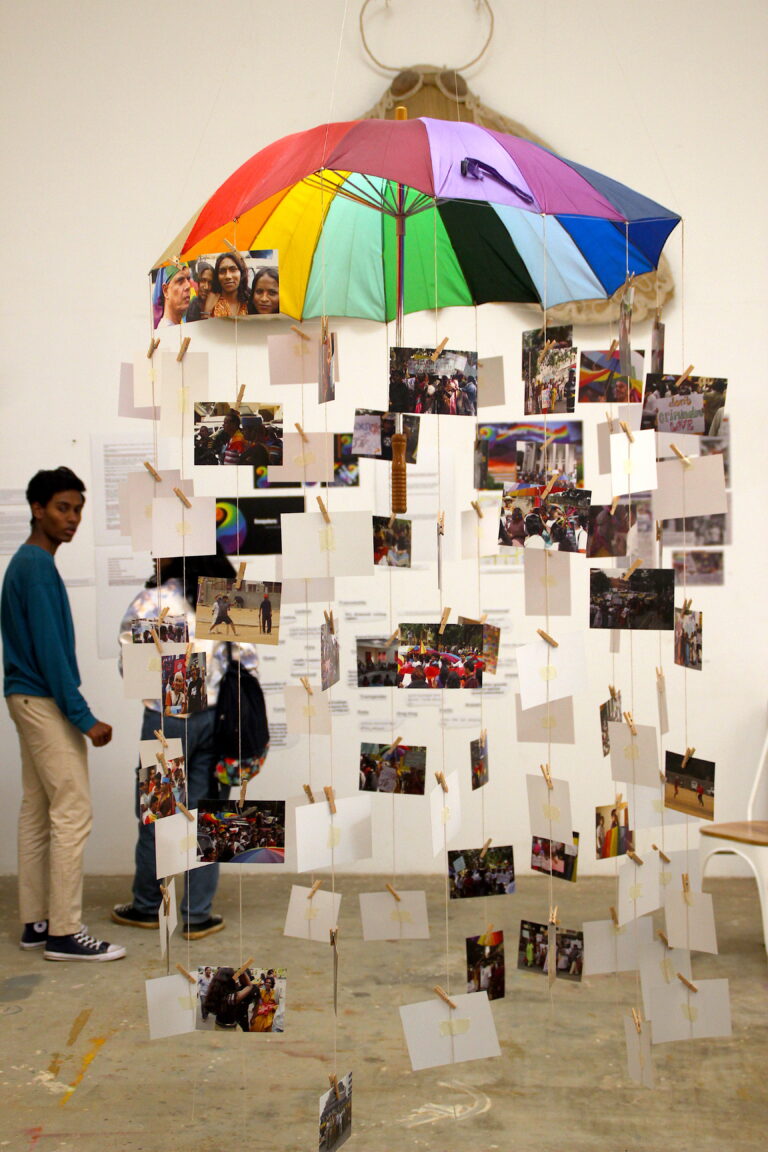An exhibition by Siddarth S Ganesh
Pride, in the format that we know it, begins in India in 2008. Queer Pride finds its origin in the Christopher Street Liberation Day Parade, 27 June 1970, which commemorated the Stonewall Protests in New York City, 28 June – 3 July 1969. In a time of increasing police brutality, harassment and humiliation, Stonewall was a flashpoint which provoked queer retaliation and catalysed a struggle for the recognition of queer rights.
“In India today we are closer to where Pride was when it started in 1970. LGBT people face a lot of harassment from the police. Lesbians are subject to violence and even forced to commit suicide by their families. Gay men are blackmailed by organised rackets that involve members of the police. Bisexuals are denied the chance to express same sex love and forced into opposite sex marriages. Transgenders are routinely arrested and raped by the police. Same sex couples who have lived together for years cannot buy a house together, have a joint bank account or will their property to each other without being challenged by their families.” (2009, Press Release, Bengaluru Pride Organising Committee)
In India and internationally, Pride began as protest. In the ensuing years, as successive victories of queer movements guaranteed queer individuals their human rights in many countries, Pride has become a space for the LGBTQIA+ community to celebrate their identity and lifestyle.
This exhibition is curated in two sections—Pride and Anatomy of Protest. Through the ephemera of the Pride Organising Committee, Bengaluru, Pride reflects on the first two years of Pride celebrations in Karnataka (2008 & 2009). Anatomy of Protest, covering a timespan of 1988-2004 focuses on different episodes of Indian queer history in Bhopal, New Delhi, Hyderabad, Kolkata, Lucknow and Bengaluru, and explores the queer politics embodied in these spaces.
Pride kicks off in 2008, foregrounded by a rich tradition of queer protests in India. Having laid the ground work over decades, queer community and activist networks take to Pride as a new medium for community organisation and mobilisation. Pride and Protest is, then, a visual testimony of individuals and organisations whose perseverance, joy, anger, grief and violence made it possible for Pride to commence in 2008. Albeit having a fraught past, the queer community’s pride in itself, in its plurality of identities, demonstrates an enduring strength and leaves a lasting legacy.
2008 & 2009
As a member of the Pride Organising Committee and a queer archivist, I seek to trace the roots of the ideas and principles that have come to characterise Pride in our city. In a bid to make public the history of Pride in an unconventional way, ephemera of the Bengaluru Pride Organising Committee from 2008 and 2009—meeting minutes, announcements, posters, slogans, financial statements, demands, letters and articles from the press—have been placed in dialogue with each other.
This section invites you to take a look behind the scenes: what went into organising the first Prides here? Between 2008 and 2009, it grows from a march to a week full of events. Discussions at the Pride planning meetings then mirror those of today. Some decisions about funding taken then continue to be respected today.
In 2022, as Namma Pride celebrates its 15th anniversary, what can be learnt from looking back at the inception of Pride? As Pride transforms as a space, how has community involvement and participation also changed? What did Pride mean then, and what does it mean now? The documents chosen for this section glimpse back in time to articulate the beginnings of responses to these questions. In this context, the responsibility I place on you is to observe and then continue conversations on the nature and role of Pride celebrations.


1988-2004
The English word ‘Protest’ is defined in the Oxford English Dictionary as ‘to say or do something to show that you disagree with something or think it is bad, especially publicly.’ It derives from the Latin pro- (publicly) + testari (to testify, from the Latin root testis, a witness).
The question the material responds to is: what has the queer body witnessed/stood witness to in the public? This question broadens the horizon of what could constitute a protest. In India, LGBTQIA+ protests are fundamentally tied to the queer body—while some oppose and seek redressal for violence committed against the body, others celebrate the existence of a body which has no legal right to be. Anatomy of Protest interprets and interrogates queer protests – why protest? How to protest? What does it mean to protest?
Using material from different collections at the archive, I examine the power that queer bodies find in and bring to protests – the aim of protests being to achieve community oriented goals, what other purposes have protests served for the queer communities? What does a queer individual find in organising and being part of these? Looking at sites of protest themselves, who were the people joining the queer movement? Conceptualising protests as praxis of politics, how did the LGBTQIA+ movement appropriate protest culture for itself and how did protests in turn come to define the movement? In a post-Navtej India, today in Bengaluru where no protests/rallies involving more than 500 people are given permission to be organised, Anatomy of Protest offers intimate vignettes into some landmark moments in Indian queer public history.
As you explore this section, I would like you to contemplate this idea—queer bodies as protest and queer bodies in protest.
